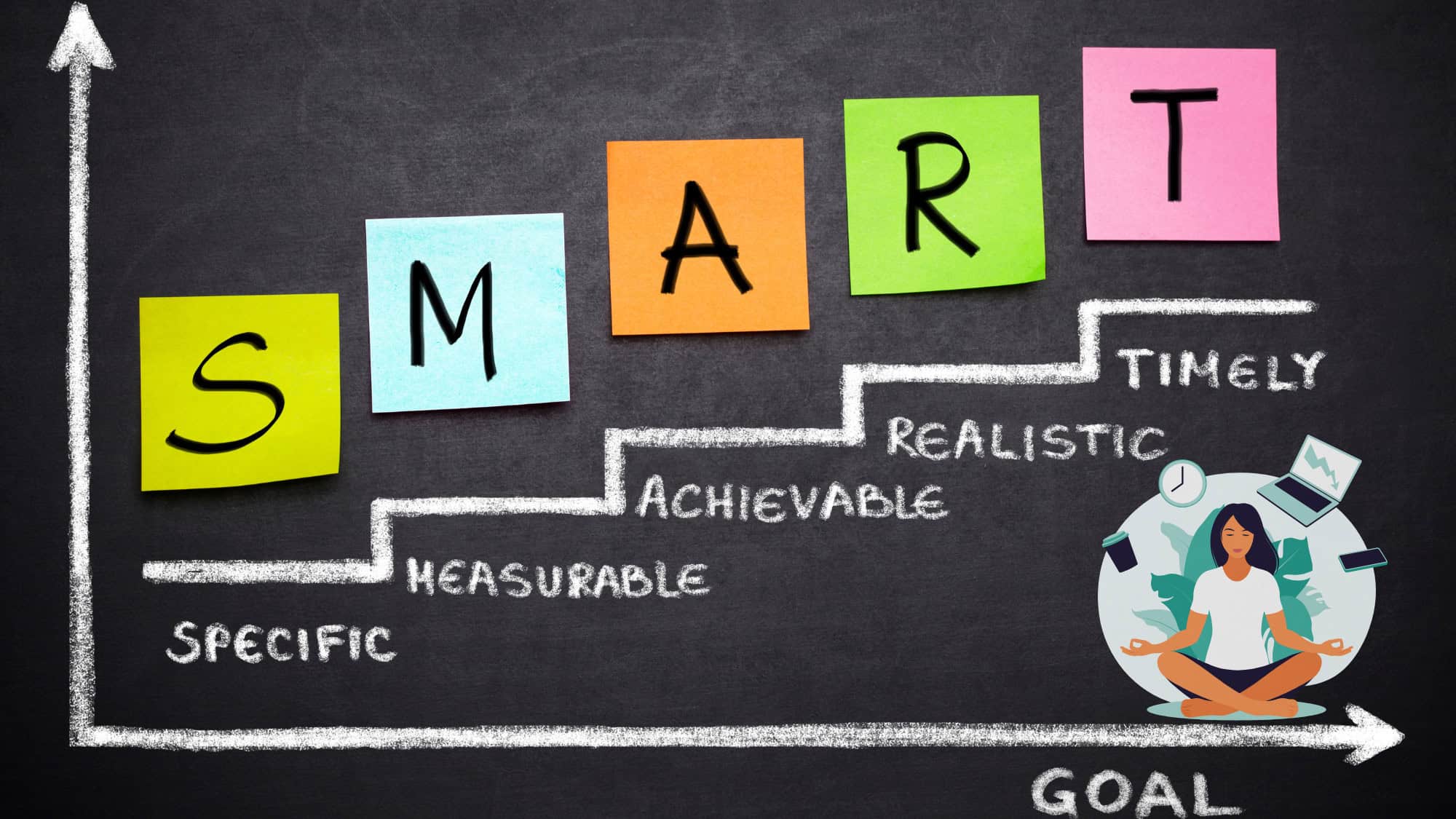In my various leadership and executive roles, I often found that the demands on my time felt overwhelming and never-ending. Juggling meetings, project timelines, team dynamics, senior management reporting, and family responsibilities left little room for me to take care of my well-being. I remember a particularly stressful period during the COVID-19 response when I neglected my health and felt the negative impacts not only on my performance but on my physical and mental health.
Here’s the good news: setting realistic wellness goals should not be an additional source of stress. Prioritizing my wellness unlocked significant benefits for me, including feeling less reactive, more focused, and more resilient. It ultimately led me on a healing journey that I remain on to this day.
What might this look like for you? Let’s explore some tangible and strategic tactics that require minimal time investment but can yield substantial results.
Understanding Wellness Goals
Before jumping into the ‘how,’ let’s clarify what wellness goals are. They are specific, measurable objectives that enhance your overall well-being. These goals encompass various aspects of wellness, including physical, mental, emotional, and social health.
The key to success is ensuring these goals are realistic and achievable within your unique context as a leader. Understanding and setting these goals empowers you to take control of your well-being and feel more confident and resilient in your roles at work and home.
Why You Want to Set Wellness Goals
There are several reasons why you want to set wellness goals for yourself:
Enhanced Productivity: Prioritizing your well-being enables you to tackle the day’s challenges more effectively. This leads to greater focus, enhanced decision-making, and improved performance at work and home.
Boosting Resilience: Achieving wellness goals builds your confidence and resilience, which are essential for navigating the complexities of leadership.
Modeling Behavior: As a leader, your approach to wellness sets the tone for your team. By prioritizing your health, you encourage others to do the same.
Improved Relationships and Communication: Well leaders are less reactive, express greater empathy, and will communicate in appropriate and healthy manners. This enables relationships at home and at work to improve. Tired and burned-out leaders often refer to the breakdown of relationships as their patience runs thin and their levels of resilience declines.
Now that you understand some of the value to identifying wellness goals, let’s work you through the steps in identifying them.
Step 1: Identify Your Wellness Priorities
The first step in setting practical wellness goals is identifying what aspects of wellness matter most to you. This can vary significantly from one leader to another.
Here are some questions to help you pinpoint your priorities:
- What areas of your well-being feel neglected? Consider your physical health, mental clarity, emotional stability, and social connections.
- What challenges do you face daily? Think about stressors at work, personal responsibilities, or habits that may undermine your wellness.
- What would make a meaningful difference? Contemplate small changes that could significantly improve your overall quality of life.
- Consider the price of not addressing your wellness needs. What might happen if you don’t address your stress and improve your wellness? This information can prove to be a powerful motivator for change.
Step 2: Set SMART Goals

Once you’ve identified your wellness priorities, it’s time to set your goals. The SMART framework—Specific, Measurable, Achievable, Relevant, and Time-bound—helps ensure your goals are practical and effective. I remember resisting SMART goal setting because it felt too close to the corporate goal-planning process. However, understanding its value in holding me accountable for my actions helped me stay on track.
Specific: Be clear about what you want to achieve. Generalities will not be helpful. Rather than saying, “I want to be thinner or healthier,” say, “I want to exercise for 30 minutes three times a week,” or “I want to walk 10,000 steps a day.”
Measurable: Identify how you’ll measure success. For example, you could track workouts, sleep hours, or mindfulness practices. Many apps automate this process, thus taking that burden off of you.
Achievable: Your goals have to align with your busy schedule. You can habit stack. If you already walk the dog, fit in some walking meditation time or mindfulness during the daily walk.
Relevant: Align your goals with your overall wellness vision. Choose objectives that resonate with your personal and professional goals. Your wellness vision, for example, may include sleeping 8 hours/night to be rested for work and home activities.
Time-bound: Set a timeframe for your goals, creating a sense of urgency and accountability. You may practice mindfulness every morning for 5 or 10 minutes or write in your gratitude journal at the end of every day for 30 days.
Step 3: Start Small and Build Momentum
As a busy leader, you need to start with manageable goals. This helps you feel less overwhelmed and more at ease as you begin your wellness journey. Here are some realistic strategies to consider:
Micro-Workouts: Finding time to exercise can be a challenge. Instead of lengthy sessions at the gym, incorporate micro-workouts into your day. A quick 5-10-minute session of bodyweight exercises (like push-ups, squats, or walking up and down the stairs) can boost your energy levels and improve focus.
Mindful Moments: Amidst the chaos of meetings and deadlines, carve out short periods for mindfulness. Set a five-minute timer to practice deep breathing, meditate, or focus on the present moment. These mindful moments enhance your clarity and reduce stress.
Prioritize Sleep: I felt utterly off-kilter when I was not sleeping. Sleep and wellness are deeply connected. Commit to a consistent sleep schedule by aiming for 7-8 hours each night. Establish a calming bedtime routine, limit screen time before bed, and create a comfortable sleep environment to improve sleep quality. I admit that I still struggle with this which is why this is still on my personal wellness priority list.
Healthy Snacking: What you eat plays a vital role in your overall sense of well-being. While you may have struggled with this in leadership positions, understanding how much better you feel when choosing healthier snack options like nuts, fruit, or yogurt can be a game changer. Setting aside time to prepare these snacks in advance prevents unhealthy eating choices.
Social Connections: Fostering social connections can sometimes fall by the wayside as a leader. The more burned out you get, the less you want to be around others. Try to schedule short catch-up calls or coffee breaks with colleagues or friends. Building a support network is essential for your emotional wellness and provides a refreshing break from work.
Step 4: Create a Support System
Accountability and support are crucial for achieving wellness goals. Here’s how you can create a supportive environment:
Buddy System: Partner with a colleague or friend with similar wellness goals. Use the buddy system to keep each other accountable and to celebrate achievements or milestones.
Join a Group: Consider joining a wellness group or class that aligns with your interests, whether it’s yoga, running, or a cooking class. Being part of a community boosts your motivation and commitment.
Hire a Coach: Consider hiring an executive or wellness coach for support. Coaches excel at holding others accountable, being strategic partners, and supporting clients when things get tough.
Communicate Your Goals: Share your wellness goals with your team or organization. This transparency fosters a culture of wellness and may inspire others to prioritize their health.
Step 5: Track Your Progress
Monitoring your progress is essential for maintaining motivation and adjusting your goals. Here are some effective tracking methods:
Wellness Journal: Keep a journal to reflect on your wellness journey. Writing down your daily practices, thoughts, and feelings helps you identify patterns and areas for improvement. Add one thing you are grateful for in that day. This helps shift your mindset to one of appreciation rather than lack and struggle.
Apps and Tools: Utilize wellness apps to track workouts, mindfulness practices, and nutrition. Many apps offer reminders and insights that enhance accountability.
Regular Check-Ins: Calendar block weekly or monthly check-ins with yourself to assess your progress. Celebrating milestones is crucial, and don’t hesitate to adjust your goals as life circumstances change.
Book Coaching Sessions: If you decide to hire a coach, whether it’s an executive wellness coach or a fitness trainer, ensure to book those sessions and follow through with them to enhance your accountability and your results.
Step 6: Be Kind to Yourself
Remember that wellness is a journey, not a destination. There will be ups and downs along the way. Practicing self-compassion is essential; you shouldn’t be too hard on yourself if you experience setbacks. Instead, view challenges as learning opportunities and adjust your goals accordingly.

A Commitment to Wellness
Remember to prioritize your well-being amidst the hustle and bustle of leadership. After all, a healthy leader is a more effective leader and a more present and available family member.
So take a deep breath, set those wellness goals, start small, and embark on a journey that benefits you and inspires those around you.
Remember, it’s about progress, not perfection.
Do you want to feel more balance, peace and wellness in your life or leadership but are unsure where to start or simply want accountability to make it happen? Set up a no-pressure call to explore how we can help you achieve leadership wellness.



